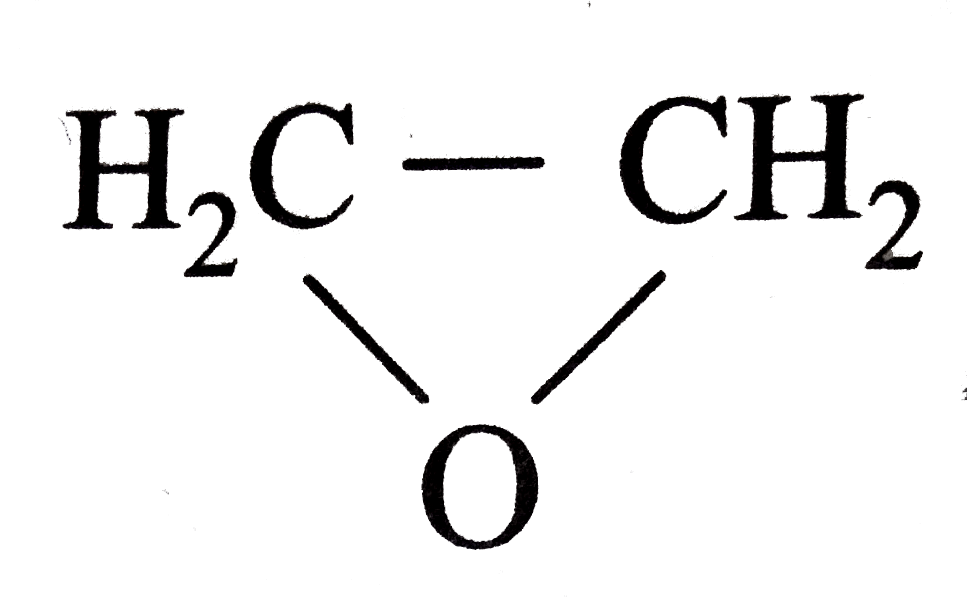CH3CHO+CH3CH2CHOdil.NaOH−−−−−→
The number of product (s) in the above reaction is ( are) ( excluding stereoisomers )
1
2
3
4
The correct Answer is:4
To solve the problem, we need to analyze the reaction between two aldehydes, CH₃CHO (acetaldehyde) and CH₃CH₂CHO (propionaldehyde), in the presence of dilute NaOH. This reaction will lead to aldol condensation. Let's break down the steps:
Step 1: Identify the Reactants
The reactants in the reaction are:
- Acetaldehyde (CH₃CHO)
- Propionaldehyde (CH₃CH₂CHO)
Step 2: Understand the Reaction Type
The reaction involves aldol condensation, which occurs when aldehydes react in the presence of a base (here, dilute NaOH). This reaction can lead to self-condensation (where one aldehyde reacts with itself) or cross-condensation (where two different aldehydes react).
Step 3: Self-Condensation of Acetaldehyde
1. Nucleophile Formation: In the presence of NaOH, acetaldehyde can form a nucleophile (an enolate ion) by deprotonation.
2. Nucleophilic Attack: The nucleophile can attack another molecule of acetaldehyde.
3. Aldol Product Formation: This leads to the formation of 3-hydroxybutanal (an aldol).
4. Dehydration: The aldol can then dehydrate to form crotonaldehyde (but-2-enal).
Step 4: Self-Condensation of Propionaldehyde
1. Nucleophile Formation: Similarly, propionaldehyde can also form a nucleophile.
2. Nucleophilic Attack: The nucleophile can attack another molecule of propionaldehyde.
3. Aldol Product Formation: This leads to the formation of 3-hydroxybutanal.
4. Dehydration: The aldol can then dehydrate to form 2-methylbut-2-enal.
Step 5: Cross-Condensation
1. Nucleophile Formation: The nucleophile from acetaldehyde can attack propionaldehyde.
2. Aldol Product Formation: This leads to the formation of 3-hydroxy-2-methylbutanal.
3. Dehydration: The aldol can then dehydrate to form 2-methyl-3-butenal.
Summary of Products
From the above steps, we can summarize the products formed:
1. Crotonaldehyde (from self-condensation of acetaldehyde)
2. 2-Methylbut-2-enal (from self-condensation of propionaldehyde)
3. 2-Methyl-3-butenal (from cross-condensation)
Final Count of Unique Products
We have identified three unique products from the reaction:
1. Crotonaldehyde
2. 2-Methylbut-2-enal
3. 2-Methyl-3-butenal
Conclusion
Thus, the total number of products (excluding stereoisomers) formed in the reaction is 3.
The reactants in the reaction are:
- Acetaldehyde (CH₃CHO)
- Propionaldehyde (CH₃CH₂CHO)
The reaction involves aldol condensation, which occurs when aldehydes react in the presence of a base (here, dilute NaOH). This reaction can lead to self-condensation (where one aldehyde reacts with itself) or cross-condensation (where two different aldehydes react).
1. Nucleophile Formation: In the presence of NaOH, acetaldehyde can form a nucleophile (an enolate ion) by deprotonation.
2. Nucleophilic Attack: The nucleophile can attack another molecule of acetaldehyde.
3. Aldol Product Formation: This leads to the formation of 3-hydroxybutanal (an aldol).
4. Dehydration: The aldol can then dehydrate to form crotonaldehyde (but-2-enal).
1. Nucleophile Formation: Similarly, propionaldehyde can also form a nucleophile.
2. Nucleophilic Attack: The nucleophile can attack another molecule of propionaldehyde.
3. Aldol Product Formation: This leads to the formation of 3-hydroxybutanal.
4. Dehydration: The aldol can then dehydrate to form 2-methylbut-2-enal.
1. Nucleophile Formation: The nucleophile from acetaldehyde can attack propionaldehyde.
2. Aldol Product Formation: This leads to the formation of 3-hydroxy-2-methylbutanal.
3. Dehydration: The aldol can then dehydrate to form 2-methyl-3-butenal.
From the above steps, we can summarize the products formed:
1. Crotonaldehyde (from self-condensation of acetaldehyde)
2. 2-Methylbut-2-enal (from self-condensation of propionaldehyde)
3. 2-Methyl-3-butenal (from cross-condensation)
We have identified three unique products from the reaction:
1. Crotonaldehyde
2. 2-Methylbut-2-enal
3. 2-Methyl-3-butenal
Thus, the total number of products (excluding stereoisomers) formed in the reaction is 3.
Topper's Solved these Questions
Similar Questions
Knowledge Check
- Question 1 - Select One
CH2=CH2HOCl−−−→Adil.NaOH−−−−−→B
The final product B formed in the above reaction isAHOCH2CH2OHB CClCH2CH2OnaDClCH2CH2OH
CClCH2CH2OnaDClCH2CH2OH - Question 2 - Select One
3HCHO+CH3CHONaOH−−−→A. A found can
AReduce Tolen's reagentBGive Cannizaro reactionCReact wit NaDGive green colour with Cr2O2−7/H+ - Question 3 - Select One
CH3CH2CHONaOH,Δ−−−−−→aldol product A.
A isACH3CH2CH=CHCH2CHOBCH3CH2CH=CH3∣C−CHOCCH3CH2C∣OHH−CH2CH2CHODCH3CH2C∣OHH−CH3∣CH−CHO
CH3CHOHCN−−→(A)HOH−−→(B)
The product (B) is :View SolutionCH3CH2CHONaOH/heat−−−−−−−→Aldol[A]
The product [A] is :View SolutionCH2−CH2−CH2−CH3Br2/hv−−−−→
Major product in the above reaction is:View SolutionCH3CH=CH2+BrCCl3Peroxide−−−−→
The major product of the reaction isView SolutionCH3CH2CH2Clalc.KOH−−−−−→BHBr−−→CNa//ether−−−−−→D
In the above reaction, the product D isView Solution

